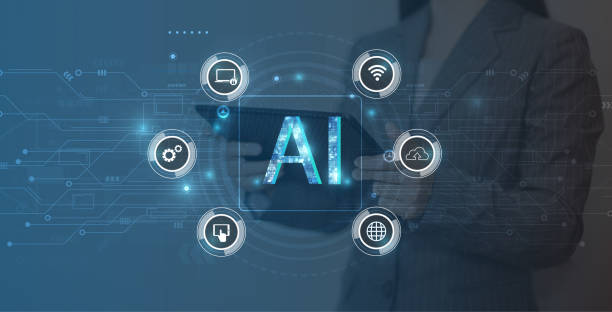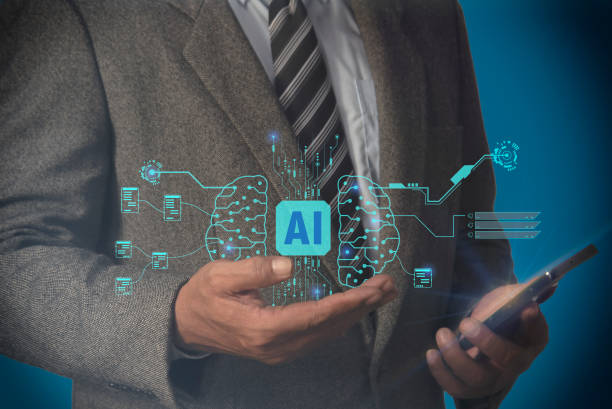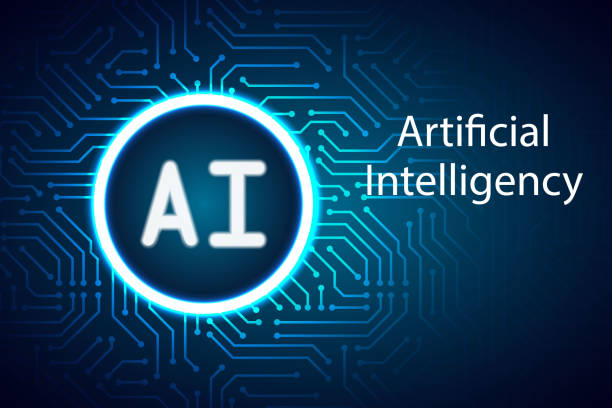What is an AI Robot and How Does it Work?
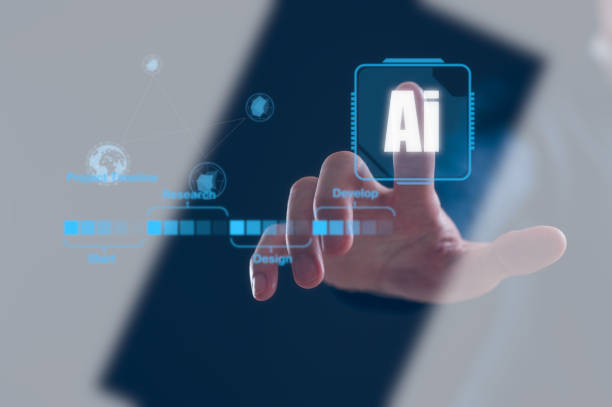
An AI robot is a combination of robotics and artificial intelligence (AI) that allows machines to perform tasks that typically require human intelligence.
These #robots can collect data through sensors and process and analyze information using complex algorithms.
Then, based on these analyses, they make decisions and take appropriate actions.
Simply put, an AI robot can learn, reason, solve problems, and even be creative.
AI robots are powerful tools that can be used in various fields including manufacturing, customer service, healthcare, and education.
Artificial intelligence is a branch of computer science that aims to create systems capable of exhibiting intelligent behavior.
The operation of AI robots typically involves first receiving data through sensors or other sources.
This data can include images, sounds, texts, or any other type of information.
Then, this data is processed by AI algorithms.
These algorithms can use various types of machine learning methods, neural networks, and other AI techniques.
Finally, based on the results of data processing, the robot makes decisions and performs actions.
These actions can include movement, speaking, writing, or any other type of activity.
AI robots are transforming various industries and have immense potential to improve human lives.
The use of AI robots is continuously increasing and is expected to play a more significant role in our lives in the future.
Are your e-commerce site visitors leaving before making a purchase? Don’t worry anymore! With Rasaweb’s professional e-commerce website design services, solve the problem of visitors not converting into customers forever!
✅ Significant increase in conversion rates and sales
✅ Unique and attractive user experience
⚡ Contact us now for a free consultation!
Types of AI Robots: Applications and Differences
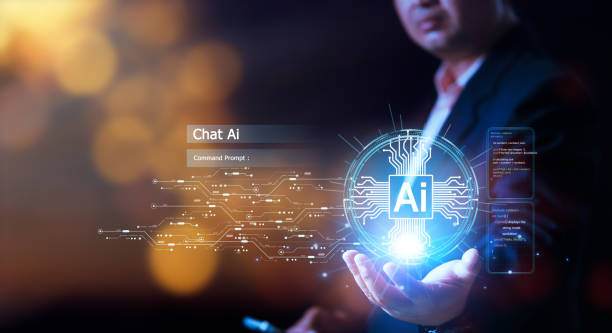
AI robots can be categorized into different types based on their function and application.
One common classification is based on mobility, which includes mobile robots (such as autonomous robots and industrial robots) and stationary robots (such as virtual assistants and chatbots).
Mobile robots are capable of moving in various environments and are typically used for tasks such as transportation, inspection, and surveillance.
Stationary robots, on the other hand, remain in a fixed location and are generally used for providing customer service, answering questions, and performing administrative tasks.
Another classification is based on the type of artificial intelligence used in the robot.
Some robots use simpler AI, which is based on predetermined rules and algorithms.
These types of robots are typically used for repetitive and simple tasks.
In contrast, other robots use more advanced AI that is capable of learning, reasoning, and problem-solving.
These types of robots are usually used for more complex tasks that require decision-making.
An AI robot with machine learning capabilities can improve its performance over time and automatically respond to environmental changes.
For example, an AI robot designed for facial recognition can increase its accuracy in recognizing faces by observing more images.
Advantages and Disadvantages of Using AI Robots: A Detailed Review

The use of AI robots offers numerous advantages.
One of the most important benefits is increased productivity and reduced costs.
Robots can work continuously without fatigue and perform repetitive and difficult tasks with greater accuracy and speed than humans.
This can lead to reduced production costs, increased quality of products and services, and improved profitability for companies.
Furthermore, AI robots can work in dangerous and high-risk environments instead of humans, preventing injury and death.
However, the use of AI robots also has disadvantages.
One of the most significant drawbacks is concerns about job displacement for humans.
With the widespread use of robots, many jobs currently performed by humans may be entirely replaced by robots.
This can lead to increased unemployment and social inequality.
Furthermore, AI robots can create new ethical and security issues.
For example, questions arise regarding the accountability of robots in case of errors or damage, as well as concerns about the use of robots for illegal and malicious purposes.
Nevertheless, with proper management and appropriate measures, the benefits of AI robots can be harnessed, and their drawbacks mitigated.
AI robots create new opportunities and challenges for society that require careful consideration and proper planning.
| Advantages | Disadvantages |
|---|---|
| Increased productivity | Concerns about job displacement |
| Reduced costs | Ethical and security issues |
| Performing dangerous tasks | Technical complexities and need for expertise |
| High accuracy and speed | High initial cost |
Applications of AI Robots in Various Industries
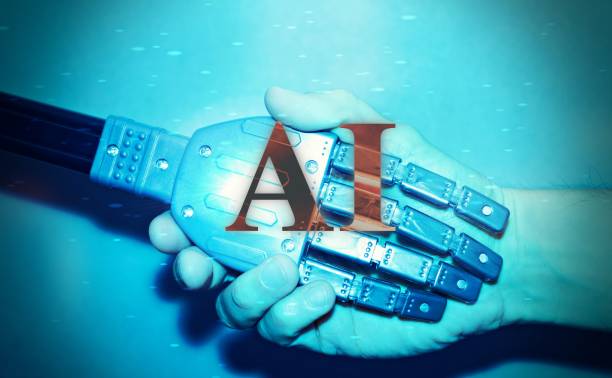
AI robots have wide-ranging applications across various industries.
In the manufacturing industry, robots are used for tasks such as welding, painting, packaging, and assembly.
These robots can work continuously with high precision, increasing production speed and quality.
In the service industry, robots are used for customer service, answering questions, and performing administrative tasks.
Virtual assistants and chatbots are examples of these types of robots.
In the healthcare industry, robots are used for surgery, assisting patients, and caring for the elderly.
Surgical robots can perform complex operations with greater precision than humans.
In the education sector, robots are used to provide personalized learning and assist students in their studies.
AI robots can help students better understand complex concepts and strengthen their skills.
In the transportation industry, autonomous robots have immense potential to change how goods and people are transported.
These robots can drive with greater safety than human drivers, reducing accidents and traffic.
In the agriculture industry, robots are used for tasks such as planting, harvesting, and irrigation.
These robots can help farmers produce more crops and use water and soil resources more sustainably.
AI robots are transforming various industries and have significant potential to improve human lives.
For example, AI robots can help disabled individuals lead more independent lives and assist the elderly in remaining in their homes and receiving better care services.
The use of AI robots is continuously increasing and is expected to play a more significant role in our lives in the future.
Are you falling behind in the competition with large online stores?
Rasaweb, with professional e-commerce website design, will bring your business online and increase your market share!
✅ Boost brand credibility and customer trust
✅ Stunning speed and excellent user experience
⚡ Act now to get a free website design consultation!
Challenges in Developing and Implementing AI Robots

Developing and implementing AI robots comes with numerous challenges.
One of the most significant challenges is the need for high-level expertise and technical knowledge.
Designing, building, and programming AI robots requires a team of specialists with diverse skills.
Furthermore, collecting and processing the necessary data for training AI robots can be challenging.
Data must be of high quality and sufficient quantity for the robot to learn effectively and perform well.
Another challenge involves issues related to security and privacy.
AI robots may have access to sensitive information, and without proper protection, this information could be misused.
Ethical considerations are also another important challenge in the development and implementation of AI robots.
Questions arise regarding the accountability of robots, their impact on employment, and how they are used for illegal purposes.
AI robots must be designed and used in a way that respects human rights and values and benefits society.
Furthermore, the high cost of developing and implementing AI robots can be a barrier to their widespread adoption.
However, with advancements in technology and decreasing costs, this barrier is expected to be overcome.
AI robots are a complex and costly technology that requires significant investment and proper planning.
By overcoming these challenges, the full benefits of AI robots can be realized, leading to a better future.
The Future of AI Robots: Prospects and Possibilities
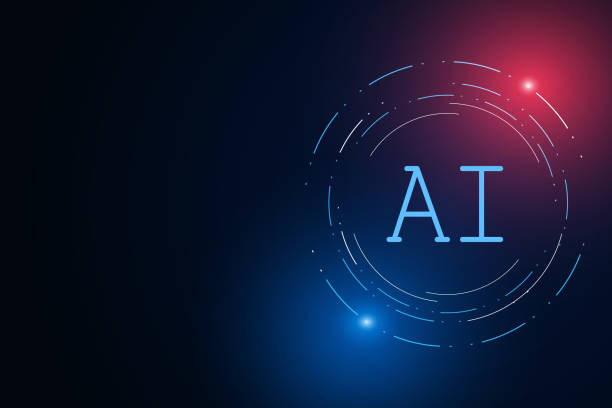
The future of AI robots is very bright and full of potential.
It is expected that in the future, robots will become smarter, more powerful, and more versatile.
Recent advancements in artificial intelligence, machine learning, and robotics have enabled the creation of robots that can perform more complex tasks and interact more naturally with humans.
In the future, robots may be present in all aspects of our lives, from homes and workplaces to hospitals and schools.
AI robots can help us lead healthier, safer, and more efficient lives.
In the future, robots may be capable of performing tasks that we cannot even imagine today.
For example, robots might be able to help us discover new planets, cure incurable diseases, and solve global problems.
However, the future of AI robots also comes with challenges.
It is important to ensure that this technology is developed and used in a way that benefits everyone and minimizes potential risks.
AI robots can be a powerful tool for improving human lives, but they must be used cautiously and responsibly.
Responsible use of AI robots is the key to achieving a bright and hopeful future.
The future of artificial intelligence can be very exciting if managed correctly.
Ethical Considerations in the Design and Use of AI Robots
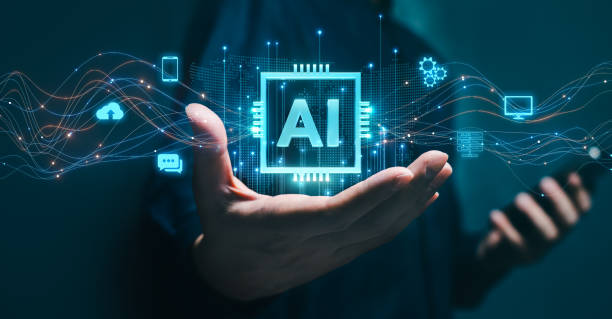
The design and use of AI robots require attention to several ethical considerations.
One of the most important considerations is ensuring that robots are designed to respect human rights and values.
Robots should not be designed to harm or discriminate against humans.
Furthermore, it is important to define the accountability of robots in case of errors or damage.
Questions about who is responsible when a robot makes a mistake or causes harm must be seriously addressed.
An AI robot should not be used as a tool to evade responsibility.
Another ethical consideration involves issues related to privacy and data security.
Robots may have access to sensitive information, and without proper protection, this information could be misused.
It is important to adopt appropriate security measures to protect data used by robots and prevent unauthorized access to this data.
Furthermore, issues related to transparency and accountability must also be considered.
It is important that the operation of robots is understandable and that their performance can be evaluated.
An AI robot should not act as a black box whose operation is incomprehensible.
By addressing these ethical considerations, AI robots can be used in a way that benefits society and prevents potential harm.
| Ethical Considerations | Description |
|---|---|
| Respect for human rights and values | Ensuring that robots do not harm or discriminate against humans. |
| Accountability | Specifying who is responsible when a robot makes a mistake or causes harm. |
| Privacy and data security | Protecting data used by robots and preventing unauthorized access to this data. |
| Transparency and accountability | Ensuring the understandable operation of robots and the possibility of evaluating their performance. |
Impact of AI Robots on the Labor Market and Employment

The impact of AI robots on the labor market and employment is a complex and controversial topic.
On the one hand, robots can increase productivity and reduce costs, which can lead to the creation of new job opportunities in fields related to the design, construction, maintenance, and use of robots.
On the other hand, robots can replace jobs currently performed by humans, which could lead to increased unemployment and social inequality.
AI is a transformative technology that can create both new opportunities and challenges for the labor market.
Some experts believe that robots will mostly replace repetitive and simple jobs, while more complex jobs requiring human skills such as creativity, critical thinking, and emotional intelligence will remain untouched.
However, others are concerned that even complex jobs may eventually be replaced by robots.
To address this challenge, appropriate policies for workforce training and retraining must be adopted so that individuals can acquire the necessary skills for new jobs.
Additionally, suitable support systems must be established for those who lose their jobs.
AI robots should not be viewed as a threat to employment but rather as a tool to increase productivity and improve working conditions.
Proper use of AI robots can lead to the creation of a fairer and more sustainable labor market.
Are you falling behind in the competition with large online stores?
Rasaweb, with professional e-commerce website design, will bring your business online and increase your market share!
✅ Boost brand credibility and customer trust
✅ Stunning speed and excellent user experience
⚡ Act now to get a free website design consultation!
How to Build an AI Robot? Step-by-Step

Building an AI robot is a complex, multi-step process that requires knowledge and expertise in various fields including robotics, artificial intelligence, programming, and electronics.
However, with the right tools and resources, even beginners can build a simple AI robot.
The first step is to define the goal and determine the type of robot.
It must be specified what purpose the robot is being built for and what tasks it needs to perform.
Based on this goal, the type of robot (such as a mobile robot, stationary robot, virtual assistant robot) and the necessary parts and components are determined.
The second step is to design and build the robot’s body.
The robot’s body must be designed so that various parts and components fit correctly, and the robot can perform its tasks effectively.
The third step is selecting and installing sensors and actuators.
Sensors are used to collect data from the environment, and actuators are used to perform necessary actions.
The selection of appropriate sensors and actuators is made based on the robot’s type and its tasks.
The fourth step is programming the robot.
Various programming languages such as Python, C++, and Java are used for robot programming.
Robot programming involves writing code to control sensors, actuators, and AI algorithms.
The fifth step is training the robot.
Various data is used to train the robot.
By training the robot, it learns how to perform its tasks effectively.
Building an AI robot is a challenging but enjoyable process that can help you improve your skills in various fields and turn your ideas into reality.
AI robots are powerful tools that can be used in various fields including education, research, and development.
AI Robots in Iran: Current Status and Future Outlook
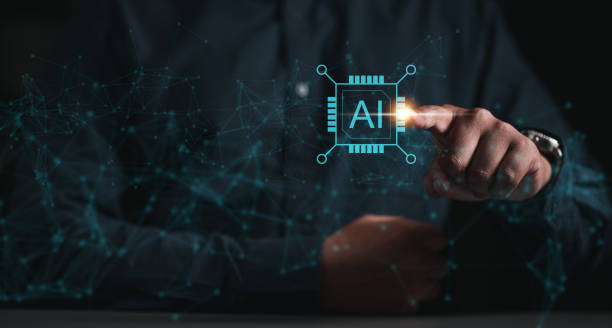
The status of AI robots in Iran is developing and progressing.
In recent years, significant efforts have been made to develop this technology in Iran, and we have witnessed the growth of knowledge-based companies and startups active in this field.
Universities and research centers also play an important role in the development of AI robots in Iran, contributing to the advancement of this technology through research and training of specialized personnel.
However, numerous challenges still exist on the path to developing AI robots in Iran.
One of the most significant challenges is the lack of investment and financial resources.
Developing AI robots requires substantial investment in research and development, equipment procurement, and training of specialized personnel.
Another challenge is the shortage of skilled and specialized workforce.
Developing AI robots requires experts with high knowledge and skills in various fields, including robotics, artificial intelligence, programming, and electronics.
Additionally, issues related to information and communication technology infrastructure can also be an impediment to the development of AI robots in Iran.
The use of AI robots requires strong and stable infrastructure in terms of internet, communication networks, and data centers.
Despite these challenges, the future outlook for AI robots in Iran is bright.
Given the country’s high potential in information and communication technology, as well as the efforts of the government and private sector to develop this technology, significant advancements in AI robots are expected in Iran in the future.
AI robots can play an important role in the country’s economic and social development and help improve the quality of life for people.
Frequently Asked Questions
| Question | Answer |
|---|---|
| What is an AI robot? | It is a robot that uses artificial intelligence capabilities to understand its environment, reason, learn, and make decisions to perform complex tasks autonomously. |
| What is the main difference between a regular robot and an AI robot? | AI robots can learn and adapt to their environment, while regular robots usually operate based on fixed and predetermined programming. |
| In what areas are AI robots used? | In areas such as industry (production lines), medicine (robotic surgeries), services (customer support, smart vacuum cleaners), exploration (space and underwater), and entertainment. |
| How do AI robots learn? | They acquire new skills by analyzing large datasets and identifying patterns through machine learning and deep learning algorithms. |
| Can AI robots have emotions? | Currently, no. They can recognize or simulate emotions, but they do not experience real emotions like humans. |
| What are the most important advantages of using AI robots? | Increased productivity, reduced human error, performance of dangerous or repetitive tasks, and provision of innovative and efficient services. |
| What challenges exist in the development of AI robots? | The need for abundant and high-quality data, algorithmic complexity, ethical issues, cybersecurity, and high research and development costs. |
| Are AI robots dangerous to humans? | With adherence to safe design principles and ethical regulations, no. Concerns are mostly related to social and economic impacts, such as changes in the labor market. |
| What is an example of an AI robot in daily life? | Smart vacuum robots (like Roomba) that automatically map and clean homes, or smart voice assistants (like Siri and Alexa). |
| How is the future of AI robots predicted? | They are expected to become smarter, more autonomous, and capable of more complex interactions with humans, playing a more prominent role in industry, medicine, transportation, and daily life. |
And other services of Rasaweb Advertising Agency in the field of advertising
- Smart Advertorial: An effective tool to increase click-through rate with the help of intelligent data analysis.
- Smart Google Ads: An innovative service to improve campaign management through precise audience targeting.
- Smart Direct Marketing: A combination of creativity and technology to attract customers through SEO-oriented content strategy.
- Smart SEO: An effective tool for campaign management with the help of Google Ads management.
- Smart Brand Identity: A dedicated service to boost sales growth based on attractive UI design.
And over a hundred other services in the field of internet advertising, advertising consultation, and organizational solutions.
Internet Advertising | Advertising Strategy | Advertorial
Resources
Comprehensive Guide to AI Robots on Digiato
The Future of AI and Robotics on Zoomit
Artificial Intelligence on Wikipedia
Applications of Smart Robots on ISNA
💡 For your business to shine and reach its peak in the online world, Rasaweb Digital Marketing Agency, by providing comprehensive services including WordPress website design, SEO, and social media management, is always by your side.
📍 Tehran, Mirdamad Street, next to Bank Markazi, Southern Kazeroon Alley, Ramin Alley, No. 6

